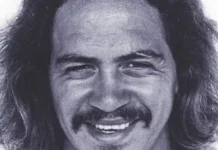
“Both of them had sex with each other. Then, the girl and I got in the middle, and they kissed, everyone kissed. There were no limits.”
If you follow the gossip rags (but of course you do, you’re here) you may have seen recent headlines alleging that Brazilian surfer Pedro Scooby had sex with footballer Neymar, one time Brazilian wonderkid; today a Saudi mercenary.
I wasn’t exactly sure who Pedro Scooby was. The name was familiar, but I couldn’t have told you anything about him. Cursory research reveals that he plys his trade mostly in big waves, which is considerably less interesting than the fact he has a staggering six million Instagram followers.
Add this to Neymar’s two hundred and thirteen million, and the sum total makes rich pickings for influencers. As such, you may take the rumours as you will.
However, it’s not the first time the tabloid press have made allegations about Neymar’s sexuality, in particular the nature of his friendship with Gabriel Medina.
But my intention is not to extrapolate salacious gossip, rather it’s to ask why, in 2023, male homosexuality is still conspicuously absent from surf culture?
According to an Ipsos global survey from 2021 incorporating twenty seven countries, just 80% of the population identify as heterosexual. Of the countries surveyed, the highest incidence of those “only, mostly or equally attracted to the same sex” were in India (17%), Australia, Brazil and Belgium (16%), with the global average 11%.
Exactly half of the men ranked on the WCT this year are either Brazilian or Australian. (Twenty of the top fifty on the CS.)
Which is enough statistical fuckery to question why the number of openly gay male pro surfers is exactly zero?
This isn’t just a surf problem, of course. Culturally we live in a time where people are more aware of LGBTQ issues than at any point in history. Yet there are still very few openly gay male athletes, and almost none in major sports or at the peak of their careers. There are certainly no gay stars.
The first male pro athlete to identify as homosexual while still active in one of the “Big Four” North American sports was NBA player Jason Collins who came out in 2013, just a year before he retired from a thirteen season career.
But Collins hardly opened the floodgates to a new wave of honesty and acceptance in sports. In the decade since, only NFL players Carl Nassib and Michael Sam have come out as gay while active in any of the Big Four sports. Neither man is still in the league today.
So rare is the admission of anything other than heteronormativity in sports, that there’s a Wikipedia page dedicated to athletes who identify as LGBTQ. It’s mostly a list of people who’ve retired, and gay women far outnumber men.
In surfing this trend is also evident. We might immediately think of Jodie Cooper, Keala Kennelly and Tyler Wright as openly gay women. (But contrary to most other sports, they are among the most talented female surfers we’ve seen.)
Yet on the men’s side there is only Australia’s Matt Branson, who waited until his forties, long after his career was over, before admitting he was gay. You might also make a case for Peter Drouyn, an Australian pro in the seventies who transitioned to Westerly Windina in 2008, before becoming Peter again in 2017. (Though as examined by Jamie Brisick, the example of Drouyn – or y – is anything but a cut and dried case of sexuality.)
Both were notable surfers, but neither were stars. And in a history going back nearly fifty years, you might reasonably expect there should have been a few more.
So where, then, are all the gay male surfers? How many do you know? I’ll go first: none. (Though I should qualify this by saying that Scotland doesn’t have a particularly high number of surfers or any surf culture to speak of.)
But it would be both a statistical anomaly and factually incorrect to state that gay men simply don’t surf. Therefore, if we assume there are many closeted gay male surfers, and there is a statistical likelihood of the number not being zero among professionals, what is it that prevents men from being open about their sexual preferences in surf culture?
Is it the hyper-aggressiveness in surf line-ups around the world, which most often fall into hierarchical structures presided over by Alpha males?
Is it the lingering hangover from aeons of surf branding dominated by bikinis, babes and balls-out masculinity?
These questions are largely rhetorical. There’s no doubt that surfing, perhaps more so than any other sport, has been marked by the tumescent sexualisation of its participants and stars.
But the irony is, and without putting too fine a point on it, surfing’s pretty gay.
Men with tousled, sun-bleached hair and hard, bronzed bodies. All the preening and posing. Men spending long hours in study and admiration of the way other men hold themselves. The way we revere style and poise above all else.
The surfers we admire most are those who approach a wave like it’s somewhere between a catwalk and an S & M dungeon.
It stands to reason that your sexuality, who you are at your core, might manifest in any sport that has an artistic bent. (There are quite a few male figure skaters on that Wikipedia list.)
If surfing hasn’t exactly been a safe space for gay men, it’s certainly been an attractive one.
So where are they?
In competitive surfing at least, one logical reason might be that any athlete with sense keeps his personal life separate. Whether on the court, the football field, or in a man on man heat, there’s a certain type of competitor who will use anything and everything to get in your head. Michael Jordan was an infamous trash-talker. Larry Bird, too. In combat sports it’s as much part of the game as punching someone in the face.
In surfing we know Kelly Slater has been ruthless in psyching out opponents. Even if his style of trash-talking was perhaps more nuanced than slinging insults about sexual habits, you can be sure men like him would use anything at their disposal to gain an advantage, regardless of personal values.
Sexuality is just another thing to be used against you, a perceived weakness that comes with a handy armoury of historical slurs.
Perhaps it’s also because surfing has a seedy skeleton or two in the closet when it comes to male sexuality. Lest we forget Paul Sargeant, the ubiquitous and popular photo-journalist who documented the Tour in the late nineties and early noughts.
“One point needs to be made clear up front”, wrote Fred Pawle in The Bottomless Vortex Of Indulgence, one of surfing’s rare pieces of investigative journalism. “Sarge was born with enormous psychological burdens. He is bipolar, alcoholic and at various times has been openly bisexual or gay, which, in some sections of the pro tour, especially in the 1980s, was akin to leprosy in the 19th century.”
Paul Sargeant was banned from all WSL (then ASP) events in 2005, with immediate effect and under unexplained circumstances.
Sexuality isn’t always simple. Nor is it always polarised as gay or straight. In keeping with new cultural norms, perhaps there are some fluid dynamics among male pro surfers that makes it difficult to publicly declare one thing or another.
And of course they’re athletes and humans. No-one should expect them to lay bare their sexual preferences any more than we would expect them to reveal the inner workings of their bowels. Privacy still matters, and so it should.
There’s no reason why surfers should blaze a pink trail for male athletes. It is the right of everyone to declare or conceal their sexuality as they see fit. But just imagine a top tier pro came out in his prime.
What might that do for the exposure and popularity of pro surfing? What about his sponsors and personal brand? Given the sparsity of homosexual men in sport, we might presume it would mean death knells for his career.
But it might not.
Rather, it could be the marketing coup of the century.





